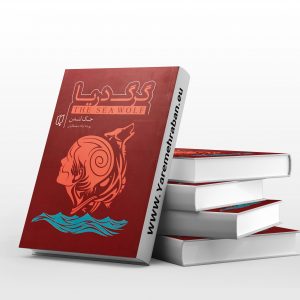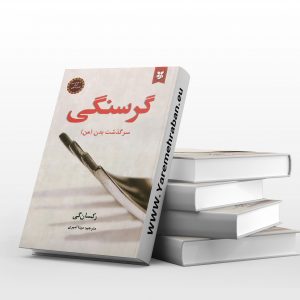Description
The invisible is the first work of Esther that Ofogh Publishing publishes its translation into Persian at the same time as the world publication of the work. In this novel, the author also creates nested stories that sometimes resemble enigmatic literature. “Esther culminates in negative character processing by exploring Adam Walker’s declining life.” “This novel has three narrators,” Khojasteh Kayhan said in an interview. Well, this is a new experience for Paul Ester, who was able to tell this story from three perspectives or three perspectives.
It means that in my opinion it could not be otherwise. The novel consists of four parts, the first of which is the biography of Adam Walker, who has become an old man and is struggling with death, and he has written the story of one year of his youth, which is 1967, and he intends to write it. Before he dies, it is up to the author, Jim, to decide whether or not to publish the book.
About the author of the book The invisible by Paul Ester
Paul Esther (born February 3, 1947) is an American author. After graduating from Columbia University in 1970, Esther moved to Paris to translate French literature. Since returning to the United States in 1974, he has published numerous books of poetry, essays, and novels. Paul Ester’s works have been translated into more than forty languages.
Introducing Paul Ester’s invisible Book
Paul Esther is an American author born in 1947. He is involved in most styles of art, including poetry, screenwriting, translation, and, most importantly, fiction and novels. His style of writing can be considered more realistic and with the time shifts created in his story, the style of most of his works can be considered modern.
He, like some writers, takes his stories out of his personal life. Heroes, characters, and even their locations are perfectly visible in his biography, and he does so with the power of his pen in such a way that these stories have a subtle effect. In other words, the stories are formed in the context of the author’s memories. In many of the stories, the author himself can even be seen choosing the names of some of the characters in his stories from his relatives.
In this sense, Paul Ester can be considered a clever writer who takes the real pieces of life and plays different roles with them like a puzzle. This acquaintance with the characters and places brings his stories to mind in a fascinating and truthful way. Something that also appears in the invisible story. Among his famous works are the New York trilogy, Ghosts and the Man in the Dark, of which the New York trilogy’s share is the most famous.
The first thing that may catch your eye after reading this story is the multiplicity of narrators. That is, he is neither omniscient nor first-person nor third-person. This novel has a combination of all three in its heart.
In some way, in each part of the book, the narrator of the story, as well as his point of view, changes to the story. This can be considered the most important and fascinating feature of this novel. One of these three narrations is in the language of Adam Walker. Student author and anonymous. A character who is very close to Esther herself. Someone is wandering in a state of lethargy between failure and despair. Her acquaintance with a rich man who has fascinated her and intends to oppress her with the art of his pen, promises a bright future for her. A wish that does not last long.
Another narrator of this story is one of Adam’s old classmates, who according to the way this story is told, these two lives can be considered as two parallel lines that are drawn at the same time and each has a completely different end. Identical beginning and very different ending. Now, after years of separating the two lines, Adam’s memories reconnect them.
Confessional memoirs that narrate the dark points and the story of Adam. A story that is not so invisible and not very clear. Choosing an invisible title also seems appropriate for it. You end the acquaintance with the character of the story at the end of the story and his face is not completely clear even after the end of the book.
Adam is looking for something that has a purpose in our lives for many: peace. The broad concept of tranquility in personal, work, and emotional life is what Adam explores. But where does it go in its search? Does he find this treasure or, like many, wanders in finding it?
This is something you will doubt even after the end of Nayr’s book.
Napida is the first work of Esther that Ofogh Publishing publishes its translation in Persian at the same time as the world publication of the work. In this novel, the author also creates nested stories that sometimes resemble enigmatic literature.
Esther culminates in negative personality processing by exploring the declining life of Adam Walker. Paul Ester (born 1947) is a graduate student of Comparative Literature at Columbia University. His work has been translated into 29 languages, and fans around the world are waiting for his latest work to be released. A knife came out of his guarantor. Bourne immediately lowered his hand with a sharp motion and hit the boy, straight in the abdomen, right on target. The boy who tore the knife in his stomach moaned. He grabbed her abdomen with her right hand and slowly fell to the ground. He said why are you playing? Seven bullets that do not have bullets …
He just writes simple
This author is running away from language games. This facilitates both the translation of his works and the study of his works. Living in New York, he understands the multiculturalism of the world today. “New York is like the rest of the world,” he says. This city is, in fact, the author’s concern, and most of his works either take place in it, or eventually take him to “New York” somewhere in the story. A giant city where everything is.
People from all cultures and beliefs. From the Chinese neighborhood to the black neighborhood. Esther has lived in such a mixed culture and is looking at this diversity. That is why it is no longer native. He did not summarize the world in New York, but learned in New York that indigenousness is useless and should be written in a language that everyone can understand. Perhaps this is why it is less possible to find the color and smell of a certain type of thinking in his works. His characters are “nowhere”. That is, they do not have behavior that can be related to a particular region, culture, character, or religion. They should be considered universal.
This has also affected Paul Ester’s language. If you are fluent in English, you can easily read Esther’s works in the original language. As he writes, he may ask himself, “Why do I have to write complicated?” Or “Why should I put concepts in a folder of hard-to-read words and metaphorical phrases?” This author does not bother to say at all. Builds and moves the simplest sentences with the most common words.
He tells the story
Esther is a professional storyteller. Experience has also shown that Persian-speaking readers do not enjoy anything more than “story”. Well, what better way than to tell a story in plain language. In the heart of one story, tell another story and include many stories in one book. Today’s reader may no longer have the patience to read a 700-page novel that is all about a character or a family.
It is now the age of esters and esters to tell seven or eight stories in the heart of a story in 300 pages. Cross each one very quickly and reach the other. Wrap up a mix of stories and turn it into a novel. Perhaps the best example of Esther’s work style is The Night of Prophecy. The reader hears a different narrative in every few pages. He is dealing with a novel, but in the heart of the novel, the stories come and go. You do not have to work hard to understand them.
All you have to do is put your eyes on the lines of the book and let their own words be read. The story is formed in your mind and you have nothing to do but let the story be narrated to you.
There are few novels in Esther’s collection that do not follow this style. At least among the works translated into Persian, “The Land of the Last” and “Music of Chance” are slightly different from the others. In them a fixed story is told. “Country of the Last” also has many ups and downs, of course, and the reader does not get tired of reading this small novel. “Music of Chance” also has a fast-paced rhythm, although it is a fixed story and sometimes seems catchy.
This storytelling has made many other writers in the world famous in Iran. For example, Paolo Coelho, whom some critics have called a “burnt threat” to Latin American literature and who believe that he inherited nothing from the glorious literature of the region, just because he told simple and pure stories, at a certain time in Iran. He found many and his books were published one after another. Shahin Eghbali, who is now sitting on the shoulder of an American storyteller.
He is not looking for a specific concept
We gave the example of Coelho. This author calls himself a “seeker” and interprets a certain kind of insight. The Persian-speaking reader, whether he likes this insight or not, welcomes his story. But if the vision that Coelho insists is a form of mysticism has damaged his work, there are no such claims in Paul Ester.
Esther does not write to change the world. He may bite and tease sometimes, but that’s irony. For example, in The Man in the Dark, the warlords of the Western world tickle a little, in The Music of Chance, capitalism takes a small bite, or in The Country of the Last, it tilts its mouth at the American Dream. But the bite, the bite, and the crooked mouth are so small that they are invisible. In fact, they do not count at all. There is no advice in Esther’s books, nor is there any particular kind of insight.
The author’s characters do not have a strange world. They may hit themselves on the head and do unusual things. But there is a difference between seeing “unusual” and “unusual”. For example, a fictional character gets up, gets in his car, and travels around the United States.
Without any particular purpose or other, he is tempted to leave his wife and go to another city. But they do not do any extraordinary work. There is no custom cloak. Miracles do not happen. Coincidence and sequence of events are very important in Esther’s works. But these are not unusual, impossible, and miraculous events. They are simple events that happen in everyone’s life.
The combination is that Esther reaches its current position in the Iranian book market. The Persian translation of the novel “Invisible”, by a publisher who has purchased the exclusive right to publish it in accordance with international copyright law, will be published in Iran at the same time as the world edition.
Esther’s latest novel, The Unseen, is not so different in style. This work of Esther, like her other works, is the story of the life and story of a man who is sick and dying. He writes the memoirs of a year of his life and wants to leave it to a friend. This work is in fact part of the memories of that man and another part of the life story of those who survived those memories. The story covers from 1967 to 2007.
Just as you read. The whole story of the book can be told in just a few sentences. Esther tells this simple story in the hearts of many other narratives and stories. When you finish the novel “Invisible”, this sentence may come to your mind: not much “Invisible”.
1- Introducing the book invisible on YouTube
2- Introducing the book invisible in Aparat














Reviews
There are no reviews yet.